Very Normal Houses
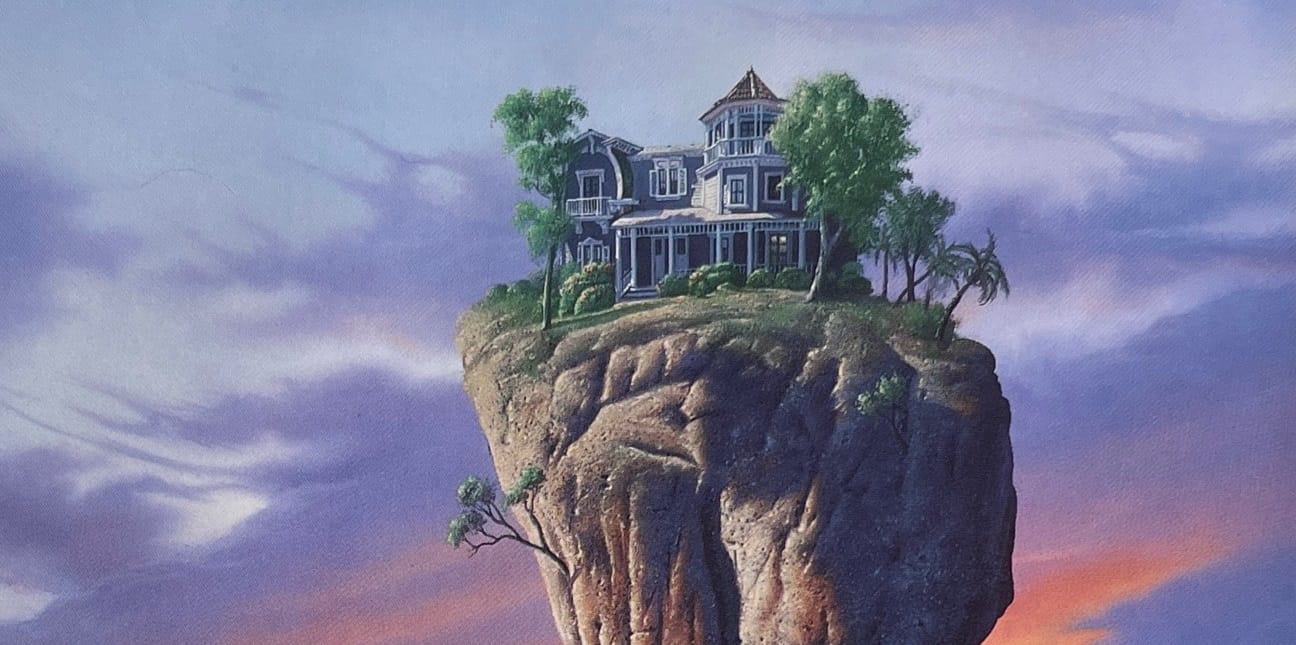
I stumbled onto this the other day:

You can find a lot more about this particular artwork for the original Zork text adventure game over here. Apparently it's "famously disliked by the developers because they felt it misrepresented their game," but it does get one element right: The very suburban, non-fantastical white house and its mailbox are straight out of the start of the game.
I thought it was a fun bit of kitsch sword-and-sorcery art and didn't think too much beyond that. A few days later, I spotted this art, posted by friend-of-the-blog DeepThot:

It's Gino D'Achille's cover for a 1980 collection of three Jack Vance novellas, called Nopalgarth. I skimmed the plot summaries, and this image might be illustrating one story where aliens arrive on Earth. Again, this one stood out to me mostly for the fun contrast between the nonspecific North American house and the alien figure.
Combined with the Zork art, this got me wondering what other Very Normal Houses have popped up alongside the fantastical in retro science fiction and fantasy art. Here's what I found.
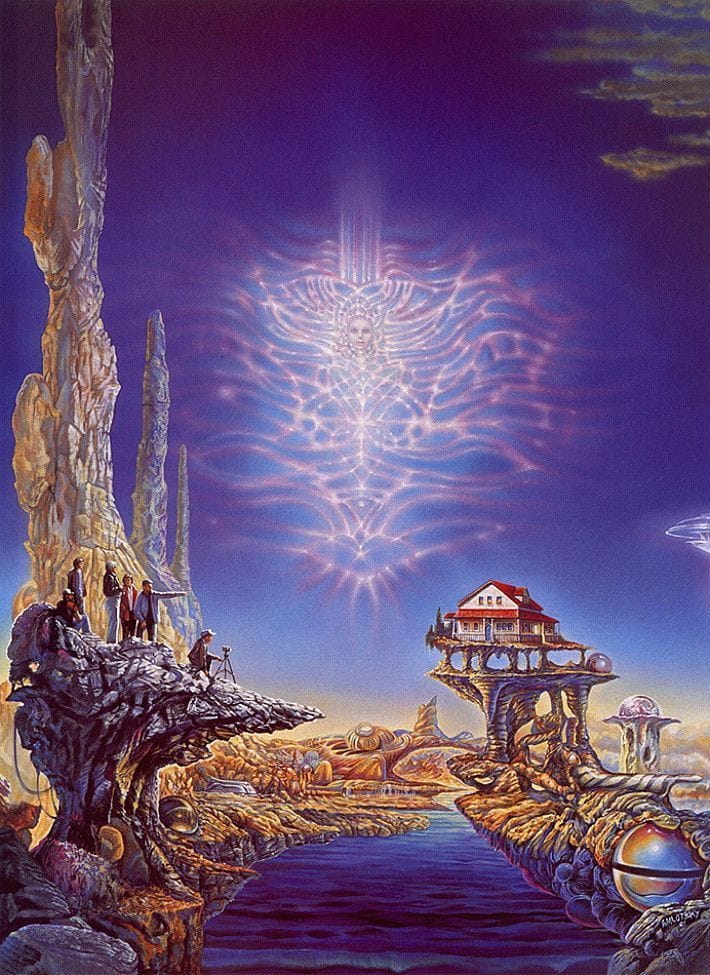
Ron Walotsky's November 1991 cover for Amazing Stories features a handful of tourists taking a gander at a house perched on top of what looks like a landscape of AI slop from before that stuff existed. The tourists appear to be ignoring the frightening cosmic angel in the sky, which is one way to handle that.
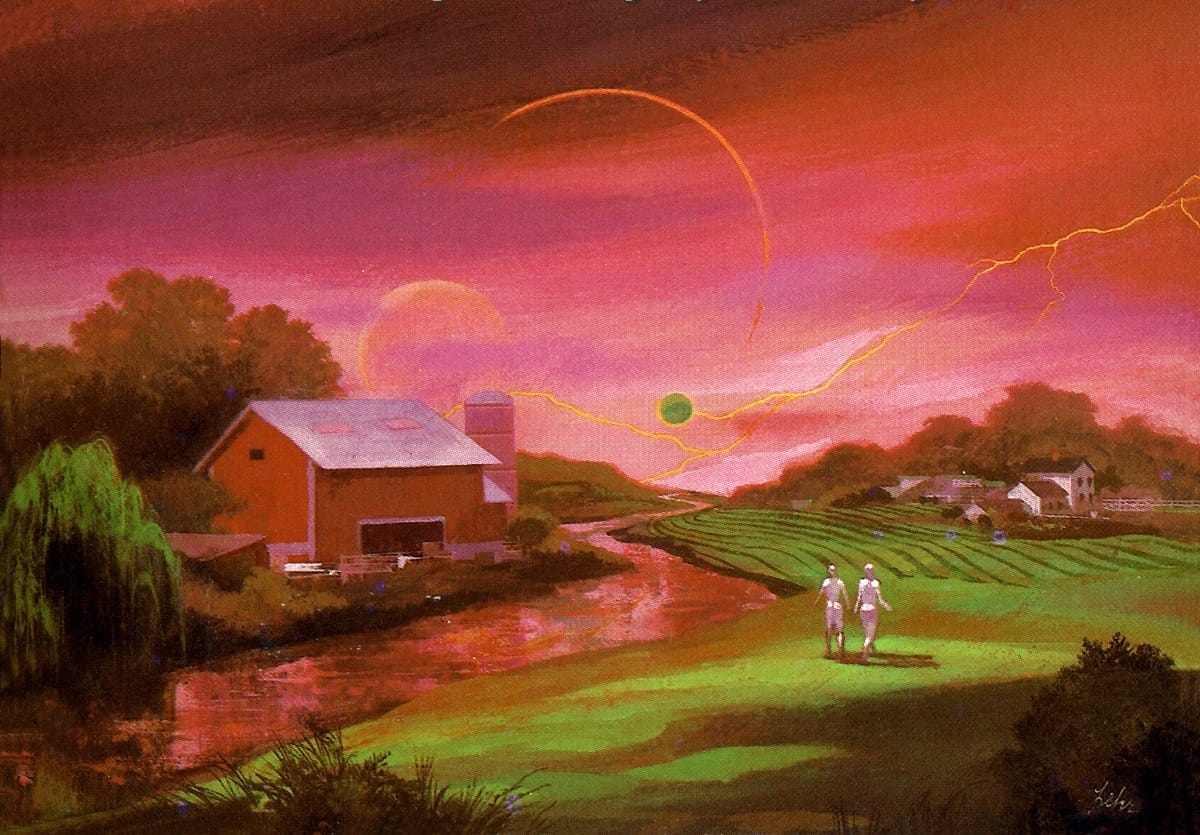
Paul Lehr skips his typical tropes (crowds of tiny people, monsters, sprawling cities) with this haunting shot of a green field contrasting sharply with the blood-red river and sky – a sky zapped by lightning and full of planets. I couldn't find any info about what it might have been used for, and it might have just been a personal piece with a rural inspiration.
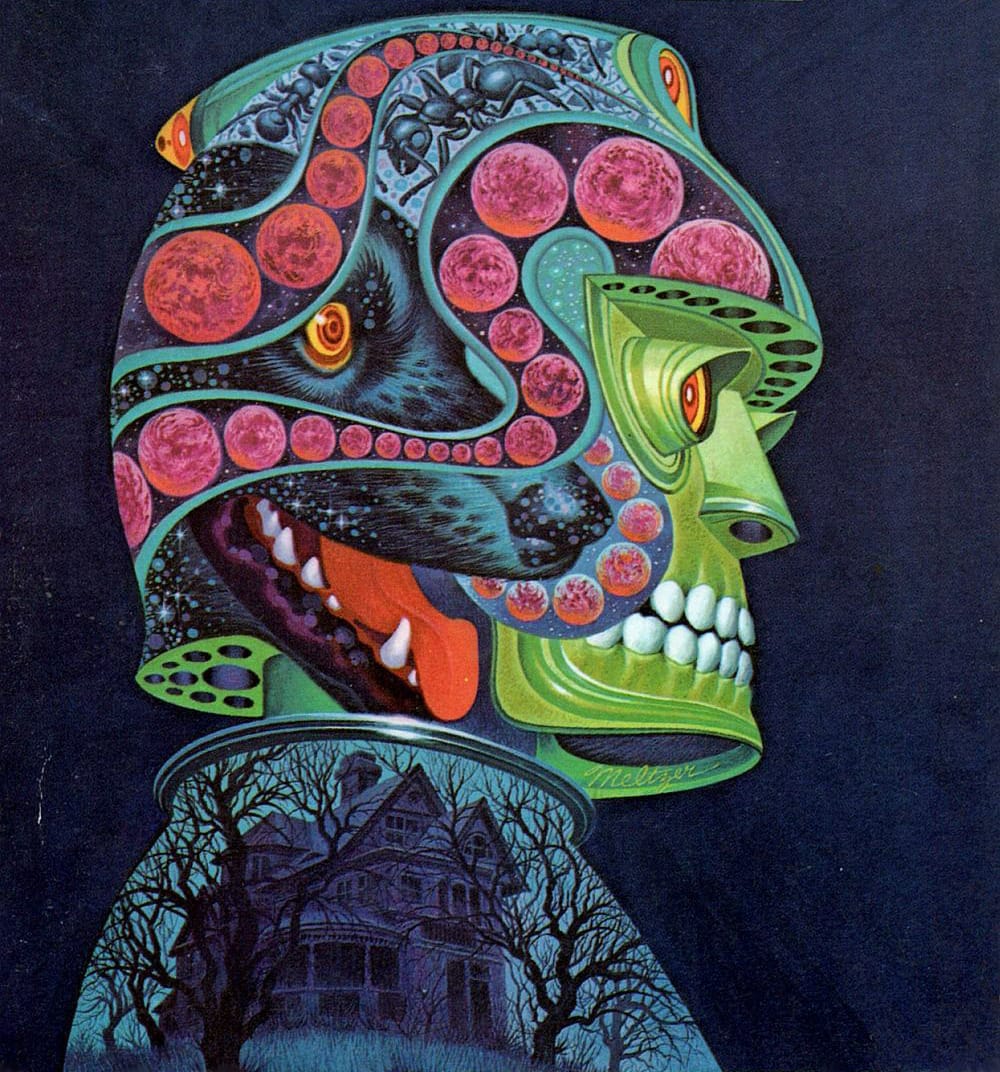
There's one obvious way to justify adding a suburban house to your speculative fiction art: If it's a creepy one, it'll fit right into the haunted house trope, a popular aesthetic for any medium. I'm hoping to stick with Very Normal houses rather than haunted ones, but I'll let this one slip through, since this is such a sick illustration.
One of my favorites from Davis Meltzer, it was created as cover art for Clifford D. Simak’s City. The novel is basically about how dogs have Planet-of-the-Apes'd themselves, and now tell half-misremembered tall tales about when humans used to be alive. This house is likely the home of the human family that repeatedly appears in the stories.

Chris Moore's 1976 cover for Clifford D. Simak's Way Station nearly made it into my art book – I had it planned for my two-page spread about trees, but the original canvas wasn't around to be scanned and trees aren't a big part of the image anyway. It has a great house, though!
If memory serves, the actual story here is about an intergalactic way station located in an ordinary guy's house on Earth, but the house never actually floats in space like this, and you don't really see spaceships in space, either, since the galactic travellers all beam themselves around with "materializers." So, for this cover, Moore was likely the hired gun brought in to meet an art director's mandate that sci-fi novels needed spaceships on the cover.
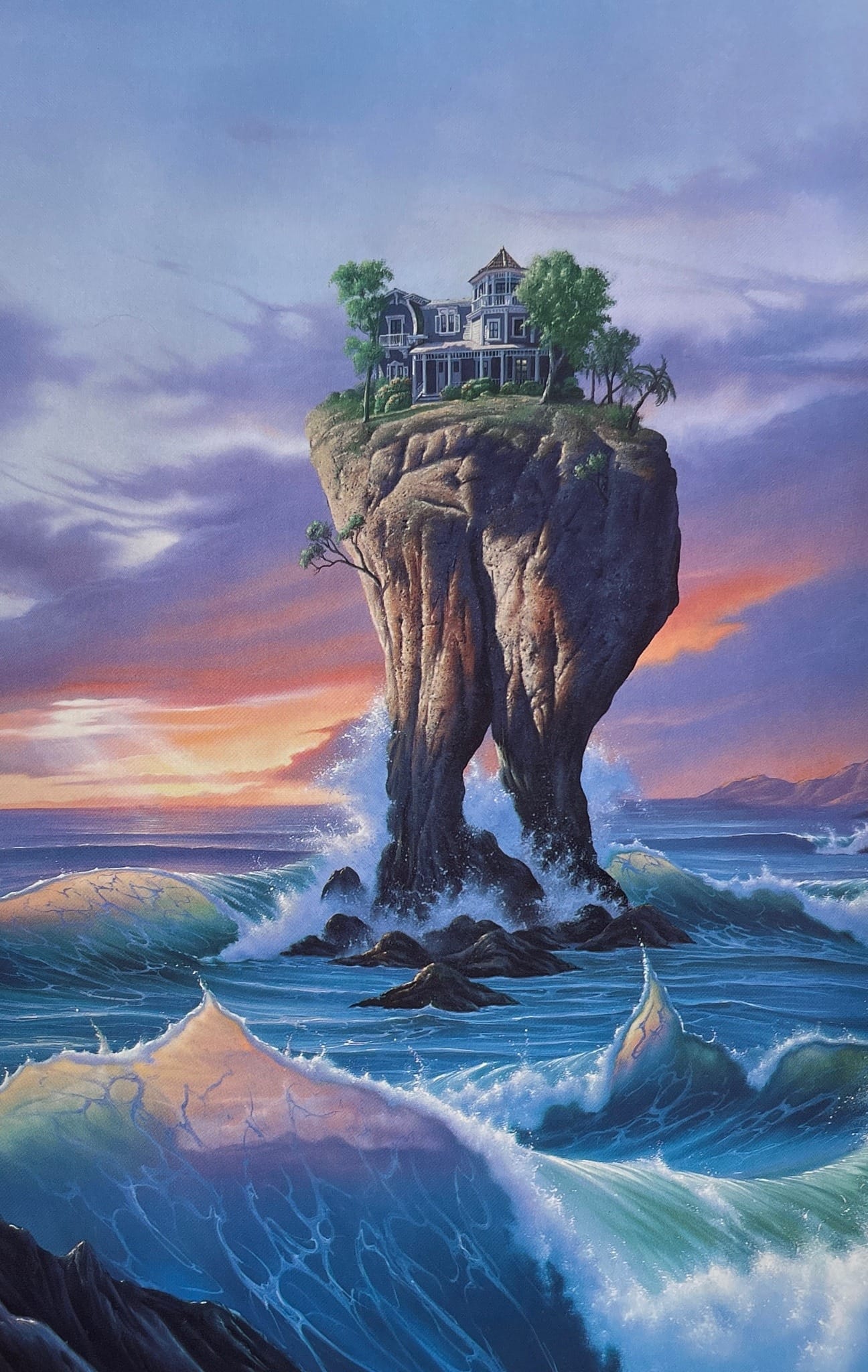
I'm not super familiar with Jim Warren's oeuvre, but this is a fun bit of surrealism, complete with a very 1990s ocean view. We were obsessed with crashing surf and sun-dappled multicolor gradients in the 90s.
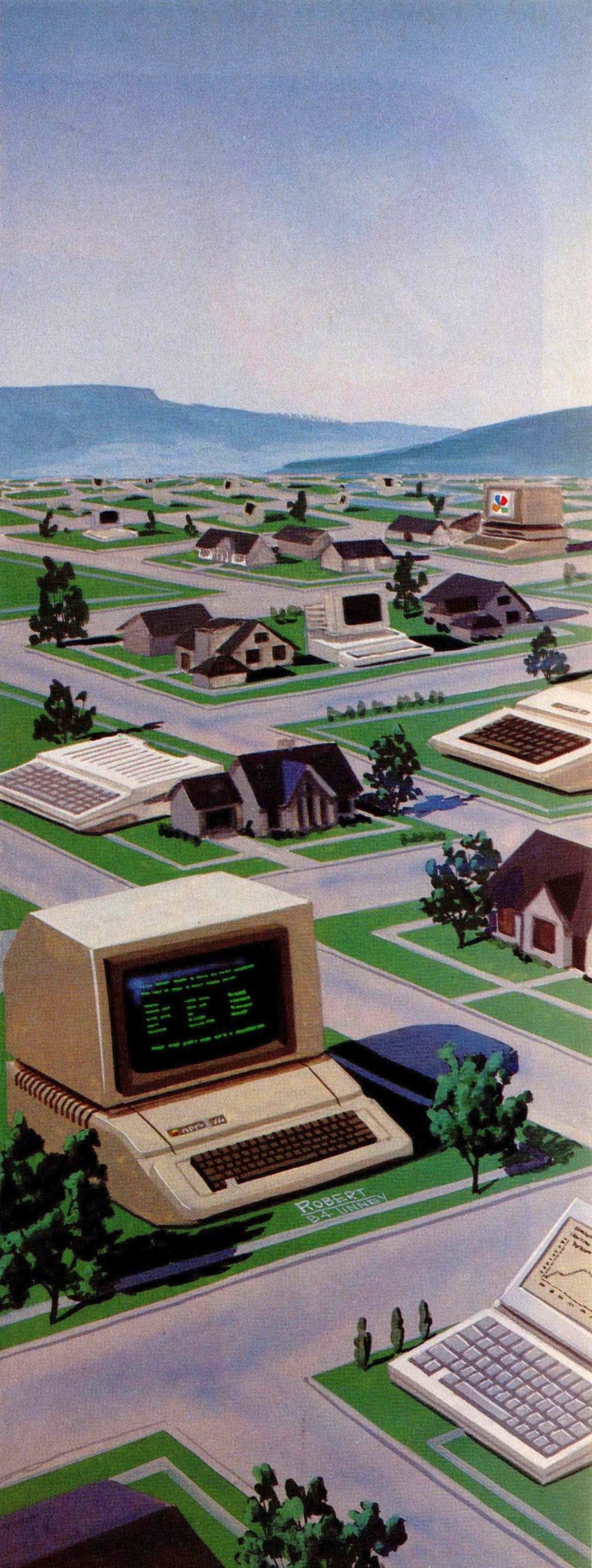
This very thin Robert Tinney illustration is from Byte magazine, credited to the December 1984 issue by @afrocosmist on Twitter where I found it.
As with most of Tinney's Byte illustrations, the point of this one is to imagine a future (surreal or otherwise) in which the personal computer is essential; woven into the fabric of life. Here, Tinney accomplishes that goal by merging the computer with the suburbs, pairing the then-groundbreaking tech with a picture of normality.
And that's about all the Very Normal Houses I found! I'm not sure we learned anything from this. Sometimes sci-fi has houses in it?
Speaking of Zork, here's a cool collection of Zork maps from freelance game designer Andrew Plotkin. If you click through, it's like getting a free bonus issue of this newsletter. Here's my favorite Zork artwork from it:
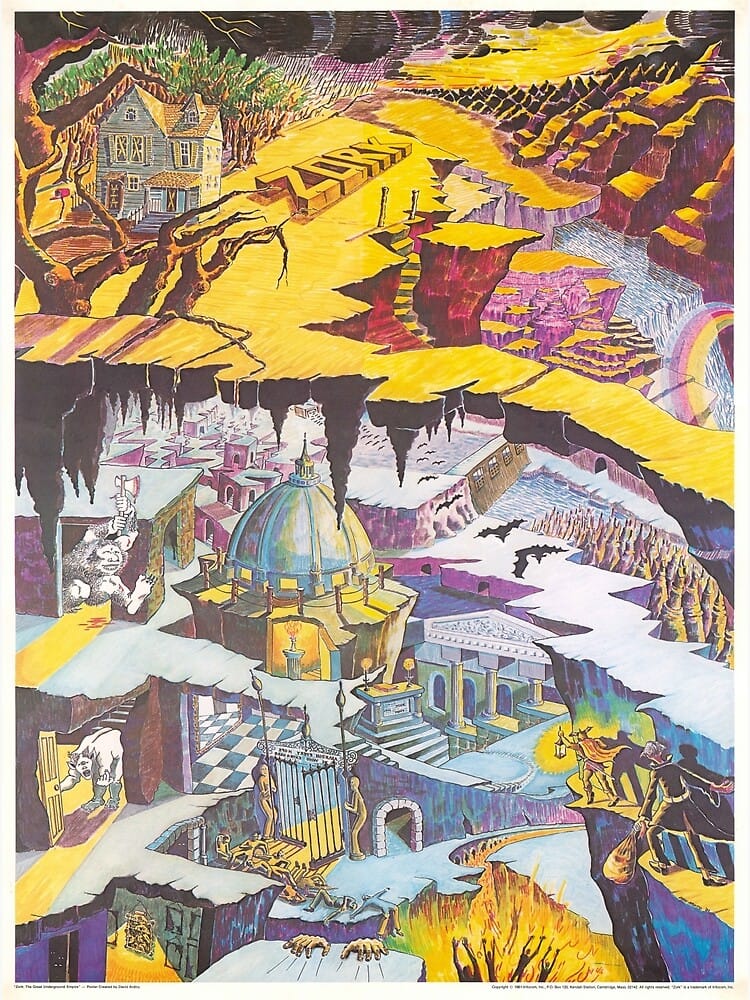
Some fun details from the post, which links to a much larger verison of this:
"This lovely poster was drawn for Infocom by David Ardito.
The poster is not meant as a map, of course. It's a collection of instantly-recognizable vignettes from the game: white house, troll, cyclops, the Land of the Dead. But the spatial connections between some areas are visible.
You can spot the Adventurer, wearing the same ridiculous headgear as in the "Barbarian Zork" cover illustration. The Thief lurks genteelly behind. And if you peer very closely, you'll find that the priceless painting in the Studio appears to be a miniature of this entire poster."
This brings us full circle back to the Barbarian Zork art! It may well have influenced a generation of Zork fans, regardless of what the developers themselves thought of it.
Hi again! It's been a while: I haven't been feeling inspired to blog or write this newsletter in the past few months. It was starting to feel too much like a chore, I suppose.
I think I'll be doing more emails like this issue – small collections of art centered on silly themes. Hunting down the art I need to justify a fun idea is the right amount of challenging.
We'll see how long I stay inspired this time! I've apparently left some random notes around for so long that some of the articles aren't online anymore: I had to turn to the Wayback Machine to get Jane Frank's profile of the Polish surreal painter Zdzislaw Beksiński for Neo Text Corp. You should check it out. Here's one of the least creepy artworks in it:

Next time: 1980s Maplin Catalogues